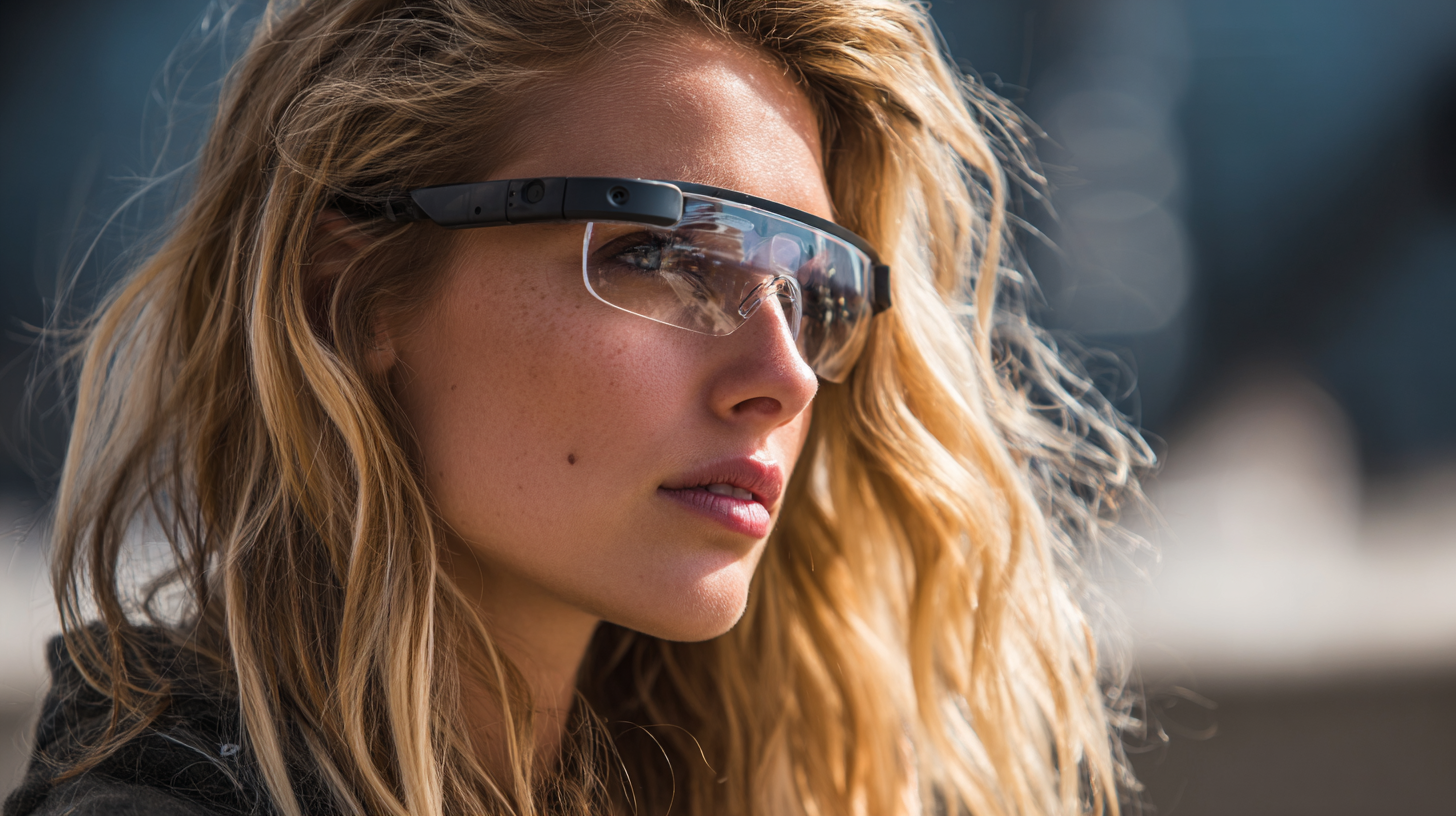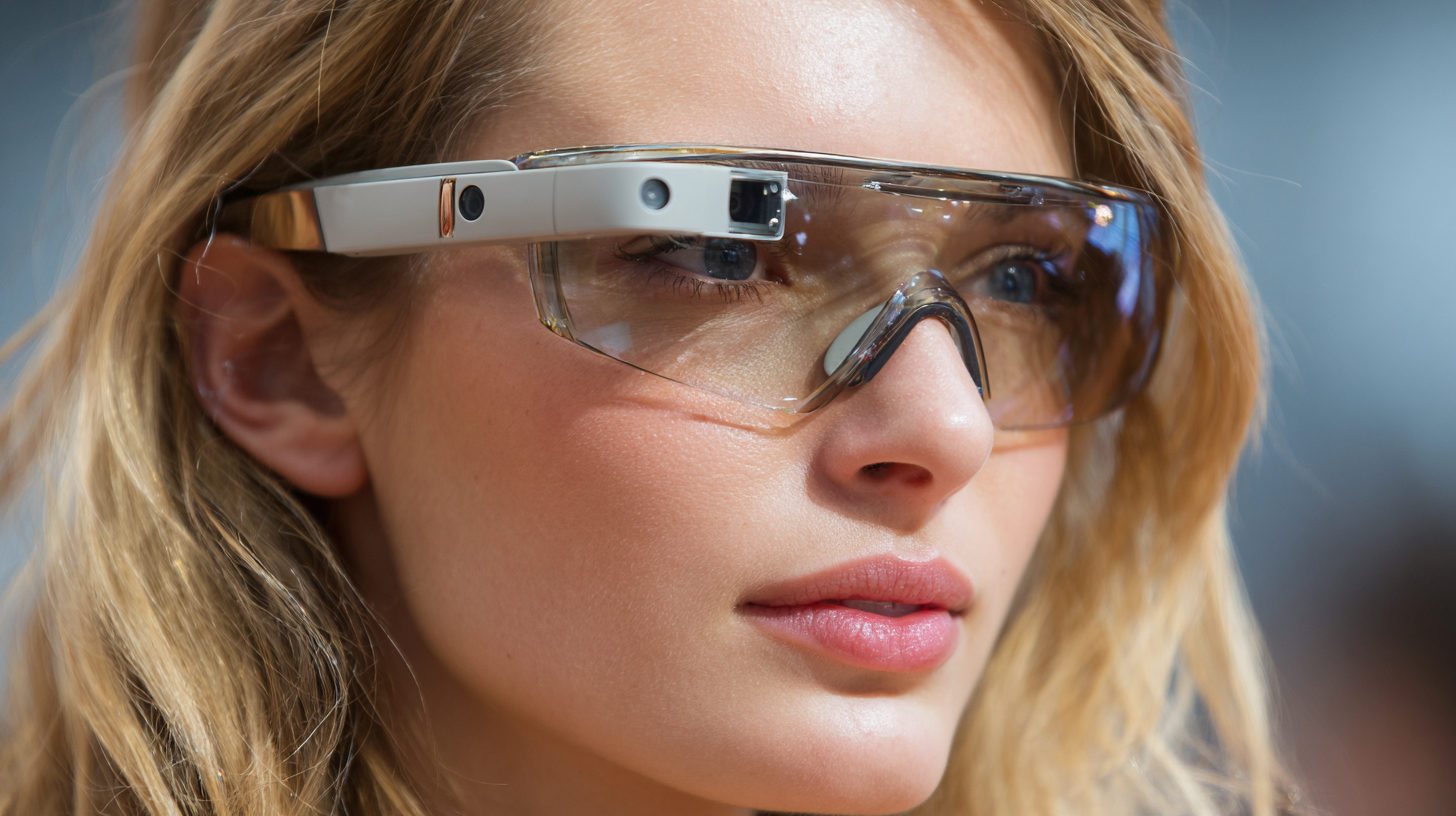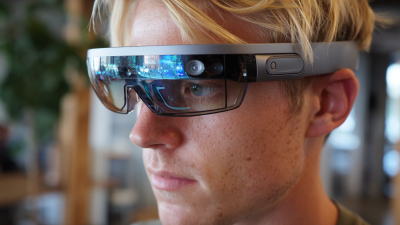 +86-13613020876
+86-13613020876



In recent years, the emergence of Smart Glasses Technology has begun to transform the landscape of wearable devices, paving the way for a more interconnected future. According to a recent report by Grand View Research, the global smart glasses market is expected to reach approximately $30 billion by 2025, growing at a CAGR of around 26% from 2020 to 2025. This rapid expansion underscores the increasing demand for integrated smart solutions in various applications, including augmented reality, gaming, and professional training.

Industry expert Dr. Jessica Huang, a leading researcher in wearable technology, emphasizes the potential of this innovation, stating, "Smart Glasses Technology will not only enhance user experience through immersive applications but also drive advances in industries as diverse as healthcare and manufacturing." As consumers and businesses alike explore the capabilities of these smart devices, the implications for productivity, communication, and entertainment are vast. As we delve deeper into the top five trends shaping this technology by 2025, it is crucial to recognize how Smart Glasses Technology is setting the stage for the next wave of wearable advancements.
The evolution of smart glasses technology has seen significant advancements, transitioning from early prototypes to sophisticated devices capable of integrating both augmented reality (AR) and artificial intelligence (AI).
The recent surge in interest around AI-powered glasses marks a new chapter in wearable technology, with several companies vying for dominance in this emerging market.
According to industry reports, the global smart glasses market is projected to reach $24 billion by 2025, reflecting a robust compound annual growth rate driven by innovations in user interaction and functionality.
However, the rapid deployment of smart glasses with integrated cameras has ignited a privacy debate.
The proliferation of facial recognition technology in public spaces has amplified concerns about surveillance and the ethical implications of being recorded without consent.
As such, companies are challenged to balance technological advancement with social responsibility.
This tension was highlighted by recent media discussions regarding the potential for live streaming from wearable devices, reigniting fears reminiscent of previous privacy controversies surrounding earlier iterations like Google Glass.
As tech giants and startups alike continue to innovate, the landscape of smart glasses is set to transform daily interactions and how we navigate the digital world.
Companies are increasingly investing in R&D to explore new applications that not only enhance user experience but also address the pressing privacy concerns that accompany these technologies.
The path ahead presents a critical opportunity for the industry to redefine norms and set standards that respect user rights while pushing the boundaries of what smart glasses can achieve.

Smart glasses technology is revolutionizing the realm of wearable devices by incorporating augmented reality (AR) features that enhance user experience and interaction with the environment. One of the key aspects of these devices is their ability to overlay digital information onto the physical world, allowing users to access navigation, notifications, and even social media without needing to check their smartphones. With built-in cameras and sensors, smart glasses can recognize objects and provide contextual data, making everyday tasks more efficient and interactive.
Beyond AR, smart glasses are also designed with additional functionalities that cater to various fields such as healthcare, education, and entertainment. For instance, they can deliver remote assistance to technicians in the field, supporting hands-free instructions while performing complex tasks. In educational settings, smart glasses can facilitate immersive learning experiences by bringing abstract concepts to life through 3D visualizations. As technology continues to advance, the integration of advanced features such as voice recognition and eye tracking will further enhance the functionality and usability of smart glasses, shaping the future of wearable technology.
This chart illustrates the projected growth of the smart glasses market from 2020 to 2025, highlighting the increasing adoption of augmented reality technology and its impact on the future of wearable devices.
The wearable technology market is rapidly evolving, particularly in the realm of smart glasses. According to a recent report by Grand View Research, the global smart glasses market was valued at approximately $1.4 billion in 2021 and is projected to expand at a compound annual growth rate (CAGR) of around 25.5% from 2022 to 2030. This growth is driven primarily by advancements in augmented reality (AR) and virtual reality (VR) technologies, which are enhancing the functionality and appeal of wearable eye-tech devices.
Furthermore, a report from Market Research Future indicates that the demand for smart glasses is also being fueled by increased investment in the healthcare, gaming, and retail sectors. For instance, the healthcare industry is expected to leverage smart glasses for surgical assistance and patient monitoring, contributing to a projected increase in their adoption rate. Additionally, Statista forecasts that the sales of AR glasses will reach over 30 million units by 2024, showcasing a substantial shift toward integrating innovative eyewear into everyday activities. As manufacturers continue to refine design and functionality, smart glasses are poised to become an integral part of the wearable technology landscape.
Smart glasses technology is revolutionizing various industries by integrating digital information directly into the user’s field of vision. In healthcare, for instance, smart glasses can enhance surgical precision by displaying vital patient data to surgeons in real-time, minimizing the need for them to look away during procedures. This technology allows for augmented reality (AR) applications that assist in training medical personnel and improving patient outcomes through more informed decision-making.
In retail, smart glasses are transforming customer experiences by providing interactive shopping environments. Retail associates can access product information instantly, facilitating personalized service. Furthermore, brands can utilize AR features to create engaging marketing campaigns, allowing customers to visualize products in their own spaces before making a purchase. These applications exemplify how smart glasses not only enhance operational efficiency but also foster deeper connections between businesses and consumers across different sectors.

The smart glasses market is poised for significant growth, driven by advancements in augmented reality (AR) and a surge in demand for immersive experiences. According to a recent report by MarketsandMarkets, the global smart glasses market size is projected to reach USD 31.3 billion by 2026, growing at a CAGR of 29.5% from 2021. This rise is fueled by applications in various sectors, including healthcare, manufacturing, and education, highlighting the versatility of smart glasses technology.
However, the path forward is not without challenges. A prominent issue is the consumer acceptance and usability of smart glasses, as highlighted in a study by Deloitte, which found that only 6% of consumers expressed active interest in purchasing them. Additionally, concerns surrounding privacy and data security continue to pose significant barriers, as users remain wary of the potential misuse of recorded data. Despite these challenges, the ongoing innovation and improved functionalities—such as hands-free operation and better integration with smartphones—create opportunities for market players to develop solutions that cater to both consumer needs and industry demands.






